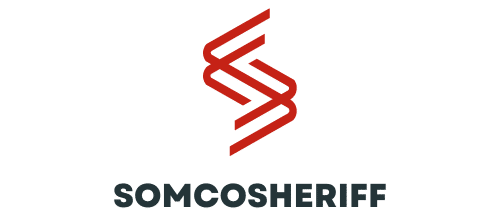What Are the Best Strategies for Achieving Digital Detox in the Internet Age for UK Residents?

Digital detoxification, or going ‘offline,’ means disconnecting from technology, notably the Internet, to focus on real-life, social interactions. This concept has gained momentum in recent years as addiction to digital media, particularly smartphones, seems to have heightened. The growing dependence on technology has led to numerous discussions on its implications on mental health, productivity, and overall well-being. For those in the United Kingdom grappling with this issue, here are some strategies that can help you achieve a digital detox.
The Role of Technology and Internet in Our Lives
Before delving into digital detox strategies, it’s crucial to understand why we’ve become so reliant on technology. The role of digital devices and the Internet in our lives has exponentially expanded in the last decade.
Cela peut vous intéresser : Can Smart Urban Furniture Enhance Public Spaces and Connectivity in UK Cities?
From work-related tasks to leisure activities, technology has crept into every aspect of our lives. What started as a platform to bridge communication gaps has now become a ubiquitous presence, giving rise to a phenomenon known as ‘online addiction’. The smartphone, in particular, has been a game-changer. This handy device caters to a host of our needs at just a click, making it nearly impossible to live without.
The benefits are undeniable – information is now accessible at our fingertips, people from different parts of the world can collaborate in real time, and mundane tasks are made simpler. However, the flip side paints a grim picture of overdependence, isolation, and a skewed sense of reality. Studies have pointed out that excessive use of these devices, especially social media platforms, can lead to stress, anxiety, lowered self-esteem, and even depression. This underlines the importance of digital detox.
A voir aussi : Unwrap the excitement: discovering perfect mystery boxes
Digital Detox: Why It’s Necessary
The constant barrage of data from multiple sources online can be overwhelming, leading to ‘information fatigue.’ This kind of mental exhaustion from dealing with an excess of information can hinder productivity, breed stress, and cultivate poor mental health.
Moreover, the continuous exposure to blue light emanating from these devices can have harmful physical effects, like disrupted sleep patterns, eye strain, and even obesity. A study by Deloitte in 2020 revealed that one-third of adults in the UK check their phone within five minutes of waking up. This dependence on technology is not only affecting our physical health but our social relationships as well.
Taking a break from the digital world allows you to reconnect with yourself and others around you. It provides room for introspection, fosters creativity and enhances productivity. Engaging in a digital detox doesn’t mean completely eliminating technology from your life, but rather developing a healthier relationship with it.
Strategies for Digital Detox
Let’s discuss some strategies that can guide individuals towards successful digital detoxification.
Define Your Technology Usage
The first step towards digital detox involves understanding your technology usage patterns. Many smartphone models come equipped with features that record screen time, providing an accurate depiction of how much time you spend online. Apps like Moment, Stay Focused, and Usage Tracker can also help monitor your social media usage.
Set Digital Boundaries
The second step is to set digital boundaries. This can be anything from assigning specific times for checking emails, limiting social media use to certain hours, or setting aside time for activities that do not involve screen time. It’s important to communicate these boundaries to work colleagues and family members to ensure they are respected.
Replace Digital Activities With Offline Ones
Another effective strategy is replacing digital activities with offline ones. Engage in activities that do not involve screens, such as reading a physical book, meeting friends in person, or taking up a new hobby.
Intervention and Enforcement
While self-regulation is a vital part of successful digital detox, sometimes external intervention may be necessary. This is particularly true for those experiencing difficulty in managing their digital consumption.
There are several services and apps available that can enforce digital boundaries by either blocking access to particular sites or limiting screen time. Examples of such applications are Freedom, SPACE, and OFFTIME. These apps offer various features such as setting schedules and downtime, blocking specific websites, and even forcing you to take regular breaks from your screen.
The Subjective Nature of Digital Detox
The final point to remember is that digital detox is a subjective journey. What works for one person may not work for another. The aim should be to find a balance that suits your lifestyle and commitments. A successful digital detox is one where technology serves you, rather than you serving technology.
Remember, the idea of a digital detox is not to completely cut off from technology. It is about creating a healthier relationship with our digital devices, where we are in control, not the other way around. By taking small, incremental steps towards this goal, we can surely reach a stage where we can enjoy the benefits of technology without letting it overrun our lives.
Achieving Addiction Recovery through Digital Detox
Addiction recovery is a process that requires one to consciously address their patterns of excessive usage and take necessary steps to alter these habits. When it comes to digital addiction, the most effective approach is a digital detox.
Addiction treatment in this context involves a self-regulated process of monitoring and controlling digital media usage. The process begins by acknowledging the issue and understanding how much screen time is spent on various online platforms. This helps in recognizing the problematic areas, whether it is excessive social media usage, online gaming, rampant emailing, or being glued to streaming platforms.
Next, it is advised to set realistic goals to reduce screen time. This could be accomplished by designating certain hours to be ‘tech-free’, or by limiting usage of certain digital devices or apps. An important part of this step is to stick with these goals and gradually increase them over time.
Another effective strategy is to replace digital activities with physical activities. Instead of scrolling through social media, consider going for a jog, read a physical book, or engage in a hobby that doesn’t involve digital technology. This not only helps in reducing screen time but also in promoting physical health.
However, in a world where digital technology plays such a crucial role, achieving a digital detox can be challenging. This is where certain digital tools can aid in the addiction recovery process. Apps such as Freedom, SPACE, and OFFTIME can enforce digital boundaries and help maintain discipline in sticking with the digital detox goals.
Digital Detox and Public Health: A Case Study
Digital detox has far-reaching implications beyond personal well-being. It also plays a significant role in public health. A large-scale study conducted in the UK in 2023, observed the impact of digital detox on mental and physical health among UK residents.
The case study followed a group of volunteers who agreed to reduce their screen time by half for a period of six months. The results of the case study demonstrated a significant improvement in the mental health of the participants. There was a reported reduction in stress and anxiety levels and an increase in overall well-being. The participants also reported improved sleep patterns and an increase in physical activity.
Such findings highlight the potential of digital detox as a public health initiative. Schools, workplaces, and public health organizations can promote digital detox by raising awareness about the harmful effects of excessive digital media usage and offering practical strategies to reduce screen time.
Conclusion: The Journey towards a Balanced Digital Life
In the Internet age, achieving a digital detox may seem daunting. However, by understanding the magnitude of our digital consumption and its effects on our mental and physical health, we can take significant strides towards a healthier digital life.
The road to digital detox involves setting clear boundaries, replacing digital activities with offline ones, and making use of digital tools that help enforce these boundaries. It is about creating a lifestyle where digital technology is a tool, not a master.
While digital detox is a personal journey, its potential benefits to public health cannot be underestimated. Schools, workplaces, and public health organizations can play a crucial role in advocating for digital detox and offering practical solutions to reduce screen time.
Remember, a successful digital detox is not about completely eliminating technology, but about establishing a healthier relationship with it. It is a journey of balance where we harness the benefits of digital technology without allowing it to dominate our lives. As the saying goes, "Technology is a useful servant but a dangerous master." Let’s aim to keep it that way.
